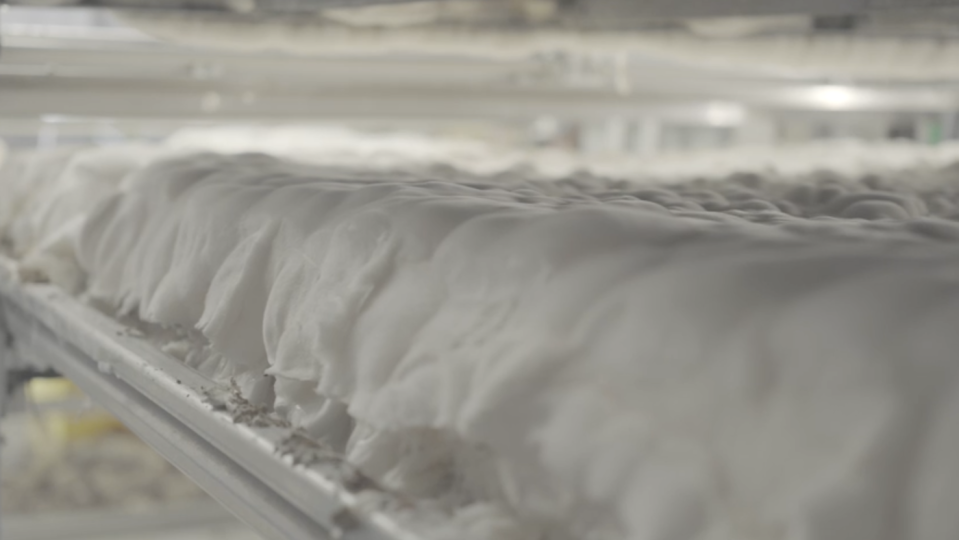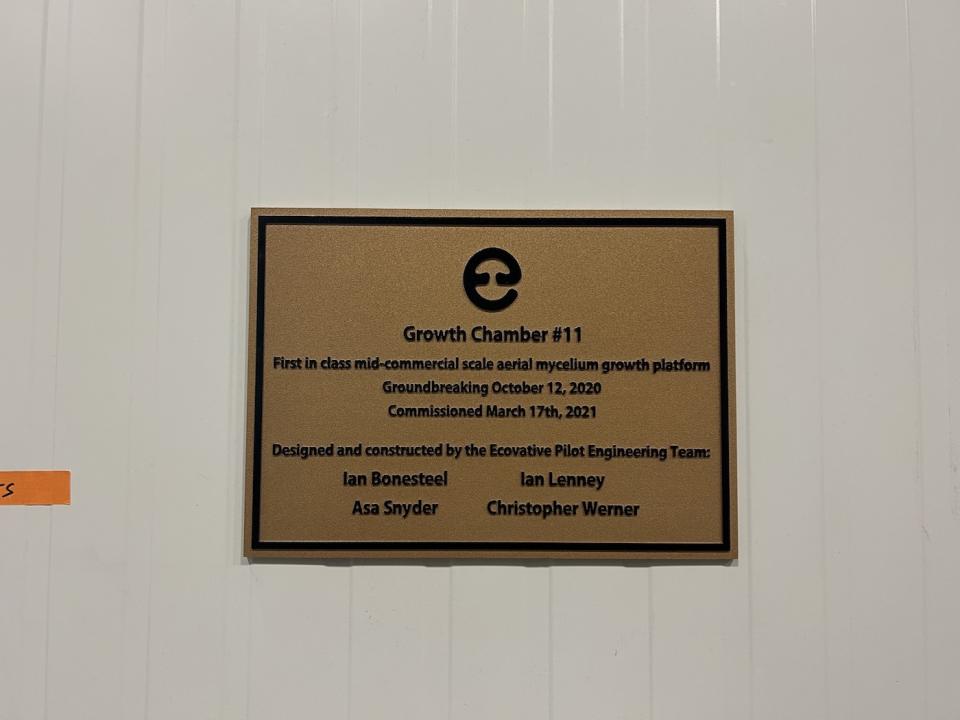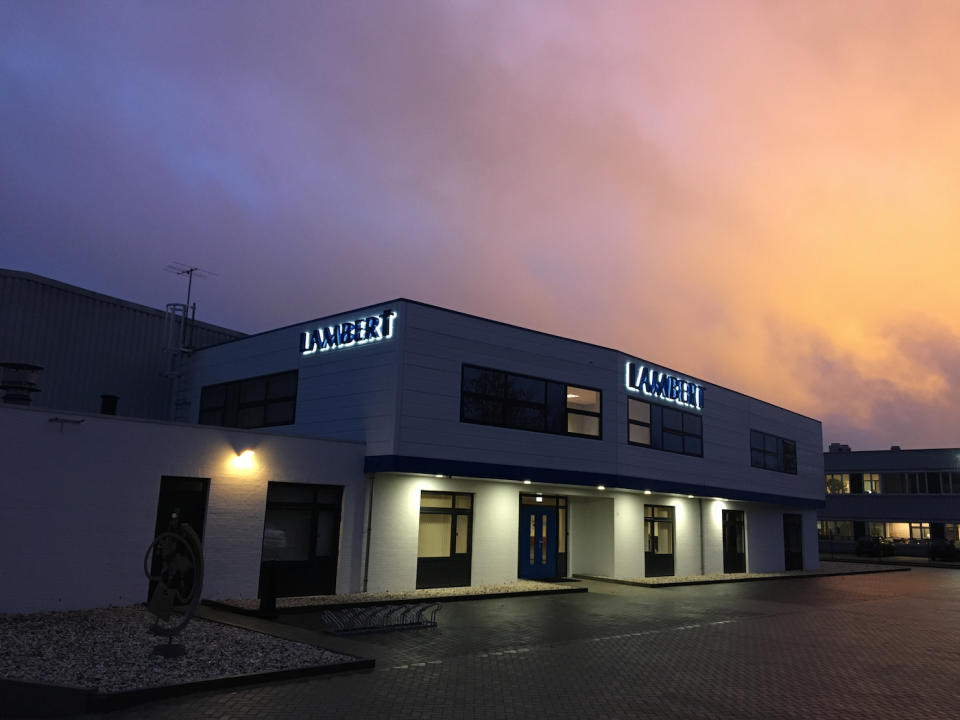Ecovative: Making the Most of Mycelium

Click here to read the full article.
Ecovative is on a mission to democratize mycelium. From licensing its intellectual property to Bolt Threads—a competing mycelium textile company—in 2018 to its Mycelium Foundry, the materials science company believes there’s enough mushroom pie to go around for everyone.
Granted, Ecovative and Bolt Threads sued each other in dueling lawsuits for breach of contract less than a year after their allegedly $20 million deal was inked. But Ecovative’s mission still stands.
“One of our focuses on democratization of this technology is actually working with mushroom cultivators. Within our infrastructure, we have been able to leverage mushroom cultivation infrastructure and take some of the underlying know-how while also adapting it, so that it’s fitting for aerial mycelium or AirMycelium platforms,” Gavin McIntyre, co-founder of Ecovative, said. The first demonstration of this was through a collaboration with a farm based in Canada, which cultivates Ecovative’s aerial mycelium (mycelium that grows upward) for food using the same underlying technology. “In order to extend our reach globally, we look to tap into the existing and vast infrastructure of the multi-mushroom cultivation industry as a value that provides a number of things. One, if we can decentralize the production of the mycelium, we can significantly reduce the embodied energy.”
And as Ecovative currently operates what it claims is the largest commercial mycelium farm in the world, growing two million square feet of its Forager hides and foams—on one acre of land—annually, the Green Island, New York-based company is taking significant strides in its mission to grow better materials.
Just don’t call Ecovative’s mycelium textile mushroom leather.
“Similar to how animal skin is a blank canvas, mycelium is also a blank canvas, and so that means you can get the same range of colors and textures from mycelium that you can expect from animal skin,” McIntyre said. “But when we look at people making choices against animal products, which is an individual’s choice, we prefer that they have an option that isn’t plastic or leather. When it comes to leather, you know, I don’t think it’s going anywhere anytime soon. But now we can ethically grow, or at least provide, what I would consider to be supply chain scrutiny and transparency for mycelium.”

Utilizing the leftovers of agriculture that would otherwise go to waste, Ecovative’s AirMycelium technology grows 100 percent pure mycelium materials at scale in vertical farms, producing sustainable alternatives to products of fossil fuels and factory farming like leather and plastic. Using this technology, Ecovative makes Forager: leather-like hides and flexible foams that replace plastic and animal-based materials with a regenerative alternative that uses less energy and water than traditional methods. Forager is grown in nine days with naturally high tensile strength, tear-resistance and durability allegedly equal to that of animal leathers. It can be grown up to 60 meters in length by four meters in width. All of Forager is entirely natural and therefore fully compostable after use.
A life cycle assessment (LCA) maintaining these claims is underway and set to be completed by the end of May. The New York State Pollution Prevention Institute, a nonprofit financed by the New York State Department of Environmental Conservation, is funding the LCA.
“I think it’s better because they’re a nonprofit,” McIntyre said. “They’re not obligated to serve what your articulated needs may be. The results are the results; you don’t necessarily have to like them.”
Having a public institute subsidize the LCA is in stark contrast to what MycoWorks, a competing mycelium company, did: commission (and pay) for its own LCA that some in the mushroom world found to be dubious—and one that claimed Ecovative’s process to produce Forager material had CO2 consumptions potentially exceeding that of animal leathers by order of magnitude, which Ecovative disputed.
But Ecovative doesn’t want to get into he-said, she-said. It would much rather focus on the work it’s doing, which includes the rollout of least one product later this year, though the collaborator in the launch is still under wraps.
It has, however, partnered with high rollers like Bestseller and PVH Corp. through its Fashion for Good Cooperative, which launched in late 2021. Through the cooperative, these brands, as well as others like Reformation and Wolverine, have priority access to Ecovative’s Forager innovations and work directly with the science materials team to co-develop mycelium materials for a range of end products and consumer applications.
Members of the cooperative work with the hides and critique them. Ecovative’s foundry scientists then take that feedback to the lab and conduct the next iteration for further testing. And that’s done pretty fast: in less than one year, the team has completed over 150 individual experiments, yielding new types of mycelium structures.
“Biomaterials have been in development for years, but they have yet to reach even a small portion of customers,” Katrin Ley, managing director of Fashion for Good, said. “Ecovative has been focused on scaling its technologies to deliver mycelium at the scale necessary for industry leaders like Bestseller and PVH Corp. This is an exciting development in the drive to scale up these solutions and increase accessibility.”
Accessibility is important to Ecovative, which doesn’t want to only make materials for the luxury market. The company factored in price parity into the technology before pursuing development, with the cost of Forager hides set to be in line with top-quality calfskin leather.

“If we really want to have the planetary impact that we’re targeting, we have to have a product that’s generally accessible by everyone. And if it’s not generally accessible, then it’s not going to displace the plastics that are commonly used in textiles that we really see as a threat both to our planetary health as well as to our future populations,” McIntyre said. “And so working with organizations that can use existing infrastructure that’s off the shelf to his or her vision for how this fits into the mass market is really critical from a product perspective. That means we need to orient our products so that they’re economically viable for the mass market.”
Ecovative’s technology is compatible with modern Dutch-style mushroom farms, unlocking over three billion pounds of already-installed growth capacity around the world. Leveraging this and without wanting to “reinvent the wheel,” McIntyre said, it didn’t hurt when Ecovative was presented with an opportunity to expand to the Netherlands.

Last December, Ecovative acquired Lambert Spawn Europa, a 70,000-square-foot mushroom spawn production facility, from a subsidiary of Pennsylvania-based Lambert Spawn Company. The purchase vertically integrated a major source of mushroom substrate—mixtures of raw agricultural products inoculated with specialized mushroom strains—within the operations of the developer of mycelium materials. The new line of supply is intended to enable and support Ecovative’s expansion internationally and across categories as both a producer and supplier to other mycelium companies.
“We are proud of the state-of-the-art facility we built in Venlo and the team we gathered to operate it,” Scott McIntyre, executive vice president and co-owner of Lambert Spawn, said. “Since collaborating with Ecovative, it has become clear they are the ideal team with the right expertise of stewarding the facility and caring for its customers, while also creating exciting new opportunities as Lambert continues to focus on serving and growing our North American markets.”
The Netherlands-based team and facility will continue to produce the same spawn and substrate, servicing existing mushroom growers and new clients.
“Our long-term goals are to continue to grow and expand our AirMycelium platform that is inclusive of transferring this technology to mushroom farms around the world as part of our decentralization and democratization approach,” McIntyre said. “The second is to continue to advance new mycelium technologies that can solve some of the world’s most pressing material issues.”
Solve the daily Crossword

